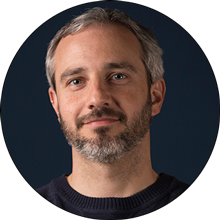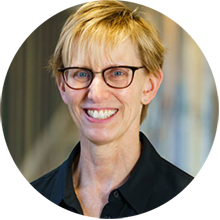PLENARY KEYNOTE PROGRAM
PLENARY KEYNOTE LOCATION: Sapphire D
The Drug Discovery Chemistry event is a dynamic conference for medicinal and biophysical chemists working in pharma and biotech. It is one of the few international events focused solely on discovery and optimization challenges of small molecule drug candidates.
Drug Discovery Chemistry offers a plenary keynote session on Tuesday, April 19 from 4:30 - 5:40 pm PDT and Thursday, April 21 from 8:50 - 9:45 am PDT. Join hundreds of your colleagues during each of these presentations, which include live Q&As with
the audience.
 4:55 Using Cryo-EM to Explore the Allosteric Regulation of Molecular Glues
4:55 Using Cryo-EM to Explore the Allosteric Regulation of Molecular Glues
Gabriel Lander, PhD, Professor, Department of Integrative Structural andComputational Biology, Scripps Research Institute
Crystallographic studies previously defined the binding site of anti-cancer immunomodulatory imide drugs within Cereblon’s Thalidomide Binding Domain (TBD), but questions surrounding the allostery of drug-induced substrate-binding remain.
We performed cryo-EM analyses of the complex in the presence or absence of drugs and substrates to show that association of an IMiD to the TBD is both necessary and sufficient for triggering an allosteric rearrangement from a basally “open”
conformation of Cereblon to the canonical “closed” conformation. We also used cryo-EM to demonstrate how CELMoDs are able to drive Cereblon closure in a mutant that is unresponsive to traditional IMiDs.
Gabe Lander joined the faculty at Scripps Research in 2013 and was promoted to Professor in 2019, and is dedicated to the development and application of cryo-electron microscopy methodologies for determining structures of macromolecular machines in order
to gain insights into functional mechanisms. His group’s research combines cryo-EM methodologies with other biochemical, biophysical, and computational techniques to produce detailed mechanistic descriptions of the molecular processes that underlie
cellular homeostasis and stress-response pathways. Gabe’s studies continue to challenge existing paradigms, with a notable track record of overturning existing long-standing myths in both cryo-EM as well as biology. His group continues to advance
automation of cryo-EM image data collection and analysis, with particular emphasis on streamlining methodologies to make high-resolution cryo-EM more broadly accessible by the biological community. The pioneering methodological avenues of research
established by Gabe’s group have enabled detailed examination of molecular assemblies ranging widely in size and shape to understand their architectures, the conformational landscapes that are responsible for molecular function, and how these
landscapes are influenced by small molecule ligands. These research strategies are being used to explore and define the molecular bases of human disease, including heart disease, a variety of neurodevelopmental and neurodegenerative diseases, as well
as cancers. Over his academic career, Gabe has received numerous recognitions and awards, which include an NIH Innovator Award, Searle and Pew Scholarships, an Amgen Young Investigator Award, and a Protein Science Young Investigator from the Protein
Society.
 9:00 Lysine Mapping for Covalent Ligand Discovery
9:00 Lysine Mapping for Covalent Ligand Discovery
Laura L. Kiessling, PhD, Novartis Professor, Chemistry, Massachusetts Institute of Technology
Electrophiles that exploit the
nucleophilic character of cysteine residues have been used for activity-based protein profiling and covalent drug generation. Still, cysteine residues are rare, and many target binding sites lack them. Lysine residues are far more prevalent, yet many
amine-reactive electrophiles lack the requisite selectivity. This talk will provide information on the relative reactivity of different lysine modification reagents and provide guidelines for lysine-directed, affinity-based protein modification.
Professor Kiessling received an ScB degree in chemistry at MIT, where she performed undergraduate research in organic synthesis with Professor Bill Roush. She received a PhD degree in chemistry at Yale University for her research with Stuart L. Schreiber.
She was an American Cancer Society postdoctoral fellow with Peter B. Dervan at California Institute of Technology. She then joined the faculty at the University of Wisconsin–Madison, where she became the Steenbock Professor of Chemistry, the
Laurens Anderson Professor of Biochemistry, and the Director of the Keck Center for Chemical Genomics. In 2017, she returned to MIT as the Novartis Professor of Chemistry. Her interdisciplinary research interests have advanced our understanding of
cell surface recognition processes, especially those involving protein-glycan interactions.
Professor Kiessling is a member of the American Academy of Arts & Sciences, the American Academy of Microbiology, the American Philosophical Society, and National Academy of Sciences. She is the founding Editor-In-Chief of the journal ACS Chemical
Biology. She is an author of over 140 peer-reviewed journal articles, and an inventor on more than 28 US patents. Her honors and awards include a MacArthur Foundation Fellowship, a Guggenheim Fellowship, the ACS Gibbs Medal, the Tetrahedron Prize,
and the Centenary Prize from the Royal Society of Chemistry.